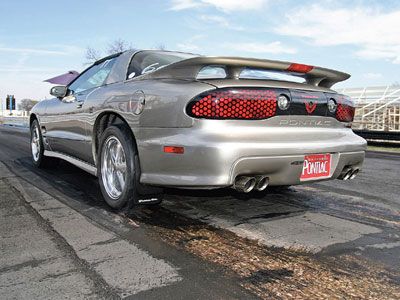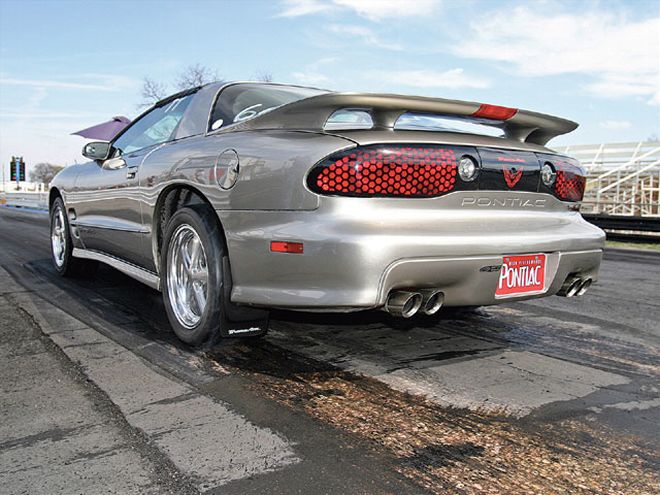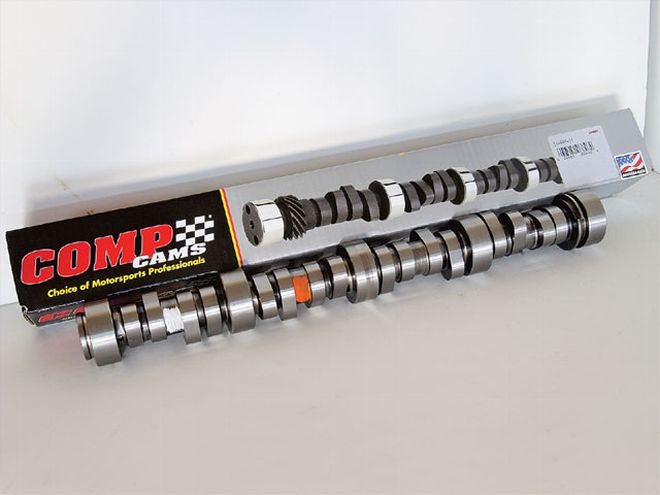

From mild to wild, "cam-only" cars, as they're known in the LS-series community, are very popular. Although traditional Pontiac hobbyists have installed headers, intakes, and camshafts for generations, the development of electronic fuel injection, hydraulic roller camshafts, and custom tuning have allowed the LS enthusiast the luxury of pushing the envelope on camshaft duration and lift, while still retaining a "near-stock" idle. With proper component and camshaft selection, increases in power and torque are possible across the entire rpm range. Forget the old-school adage that increased top-end power simply traded away low-end torque.
To recap, our test car, Harold Baker's automatic-equipped 66,000-mile '00 WS6 T/A is a cruiser that's also bracket-raced in the Texas Muscle Car Club Challenge Series. In addition to the SLP LS6 intake manifold, Jet-Hot headers and the off-road Y-pipe installed in Part I (HPP, Aug. '08), the car has a plethora of free and cost-effective mods (HPP, "Bolt-On Inspiration," July '06), including a Corsa after-cat exhaust, BBK 80mm throttle body, and an aftermarket suspension system.
 Comp Cams' Jet-Hot XER273HR grind (PN 54-444-11, retail $402.42) is advertised as a high-rpm street-strip cam that features the most aggressive lobe profiles in Comp's catalog for LS1 applications. With a power-band of 2,000 to 7,000 rpm, the cam specs in at 0.224/0.230-degrees duration at 0.050 and 0.581/0.588-inch intake/exhaust lift on a 114 LSA. As compared to the stock GM '98-'00 LS1 cam (202/210-degrees int/exh at 0.050-inch duration and 0.496/ 0.496-inch intake/exhaust lift on a 116 LSA), the Comp cam requires an efficient intake and exhaust system to realize its potential.
Comp Cams' Jet-Hot XER273HR grind (PN 54-444-11, retail $402.42) is advertised as a high-rpm street-strip cam that features the most aggressive lobe profiles in Comp's catalog for LS1 applications. With a power-band of 2,000 to 7,000 rpm, the cam specs in at 0.224/0.230-degrees duration at 0.050 and 0.581/0.588-inch intake/exhaust lift on a 114 LSA. As compared to the stock GM '98-'00 LS1 cam (202/210-degrees int/exh at 0.050-inch duration and 0.496/ 0.496-inch intake/exhaust lift on a 116 LSA), the Comp cam requires an efficient intake and exhaust system to realize its potential.
The upgrades added in Part I gained almost 26 rear-wheel horsepower, so the stage is now set to provide a more aggressive Comp Cams hydraulic roller and related valvetrain components to utilize the new-found breathing capabilities of the engine.
According to Comp Cams, "Street enthusiasts and performance shops have been requesting more cam designs that are equally at home at a local cruise and the dragstrip. This type of dual-purpose cam has to idle well, but still make tremendous power. As the market has evolved and the intakes, headers, and tuning have advanced, we have been able to increase duration and design faster ramp profiles to increase the power potential for street applications. Owners of small-bore LS-series engines have a wide variety of camshaft profiles available, but for stock-cube applications, generally an intake duration of 224 degrees at 0.050 is the practical limit, unless the LSA (lobe separation angle) is widened beyond 114 degrees."
Keith Lose of Real Performance Motorsports (RPM) in Lewisville, Texas, states, "We work with the technical advisors at Comp all of the time to create custom grinds for everything from "cam-only" LS1 applications to all-out big-cube LSX-based nitrous race cars. For this application, we chose an XFI camshaft that features Comp's XE-R lobe profiles directly from the catalog. The Comp XER273HR grind features the aggressive fast ramp XE-R lobes and specs in at 0.224/0.230-degrees duration at 0.050 and 0.581/0.588-inch lift on a 114 LSA. Overall, this is a great street-strip cam that idles well and pulls down excellent power gains on 'cam-only' LS1 and LS2 applications."
Follow along as we install the Comp cam and upgrade the valvetrain at RPM. In the next issue, we'll present the chassis dyno and strip test results.
Recommended Tools